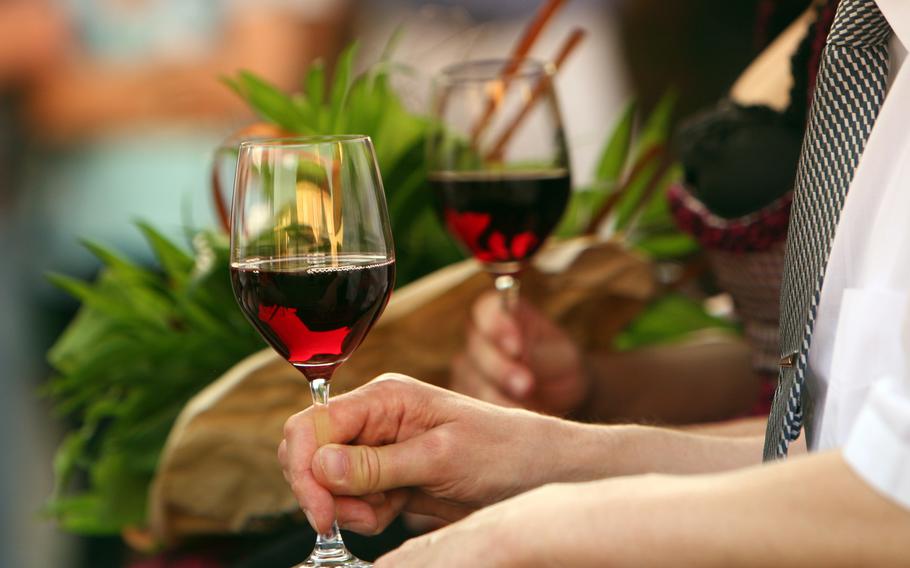
(iStock)
Halloween is over, Christmas is still far away, and here in Europe, there’s no Thanksgiving holiday to brighten the otherwise lackadaisical month of November. Despite its dearth of unmissable events, this junction of the year earns its place in a tourist’s time through thinner crowds, discounted prices and an overall less frenetic pace. Here are just a few ways to make the month a memorable one:
Taste the wine: By November, the grapes for this year’s vintage have been harvested, pressed and left to ferment, leaving many winemakers with time enough to either host their own wine tasting events or travel to venues where producers meet consumers. From intimate affairs in ancient cellars to large-scale events in exhibition halls, tastings allow would-be consumers to discover for themselves the wines that most appeal to their own particular tastes.
Switzerland hosts two wine affairs of note in November. The Weinfestival Basel, running through Nov. 3, features 120 exhibitors showcasing some 3000 wines from around the world. The Expovina, currently being held in Zurich through Nov. 14, is notable for the fact that it takes place on board ships docked in the city’s lake. In Italy’s South Tyrol region, the Merano Weinfestival, on from Nov. 9-12, offers visitors the chance to sample wines alongside culinary specialties in the refined surroundings of the Kurhaus. Tasting events in Germany are smaller but no less atmospheric; these include a chance to sample wines of the Pfalz in the cellar of Weingut Wolf in Bad Dürkheim-Ungstein Nov. 16-17. Note all above-mentioned events charge entry fees.
Have one last go at an autumn fun fair: Imagine a volksfest, Middle Ages festival, massive beer hall, farmer’s and goods market and an agricultural fair rolled into one and you’ll have a good approximation of what the Hochheimer Markt is all about. The celebrations of the fair-weather months are capped off by this massive, free-entry affair set to take place just east of Wiesbaden, Germany Nov. 8-12. Online: tinyurl.com/tpmx2f9t
Kick off carnival season: While carnival celebrations peak only in February and March, tradition holds that the start of the carnival season actually occurs at 11:11 a.m. on the eleventh day of the eleventh month. Carnival stronghold cities including Mainz and Cologne in Germany and Maastricht in the Netherlands celebrate the day with street parties attracting thousands of costumed revelers.
Feast like a local: While family and friends can never be replaced, a lack of turkey on the table can be mitigated by indulging in the traditional foods of the place you presently call home or happen to be visiting. Mid-November in Germany, Austria or the Czech Republic means Saint-Martin’s day menus; many restaurants will offer a multi-course, set meal typically consisting of goose, dumplings and red cabbage. Toward the end of the month, restaurants throughout Denmark will begin offering Julefrokost, a Christmas lunch, often served buffet-style, consisting of pickled herring and other cold seafood, liver pâté, crispy duck, carmelized potatoes and rice pudding.
Those with hankerings for sweet treats in Italy are well catered-to in November. There’s yet another reason to be happy to have made way to beautiful Cremona between Nov. 9 and 17, as the Festa del Torrone celebrates its delectable vanilla nougat. Online: festadeltorrone.com
Meanwhile in Perugia, the cocoa-fueled frenzy otherwise known as Eurochocolate brings melt-in-your-mouth goodness to its visitors Nov. 15-24. Online: eurochocolate.com
Visit Europe’s great cities in their quiet months: Short-term rental apartments that displace natives, shops catering only to tourist needs, inflated prices and water shortages are only a few of the reasons why local residents of some of Europe’s great cities have had enough of tourists. Yet places such as Venice, Amsterdam, Dubrovnik and Barcelona are so uniquely beautiful, it’s hard to resist their magnetic pull. Is there a way to be a responsible traveler in places plagued by overtourism? Traveling in the off-season, staying in hotels, hostels or guesthouses instead of AirBnBs, patronizing local, non-chain shops and restaurants, using public transportation and avoiding fragile environments are all ways to mitigate negative impact. Hiring a local guide is a great way to not just see the town but hear a local’s point of view on the topic of overtourism.
Learn to cook: Take advantage of this period of low visitor numbers from abroad by booking a cooking class, all the better when the item one learns to prepare is symbolic of the city’s cuisine. In Naples, the art of pizza making is introduced in a course titled “Pizzamaker for a Day”. The four-hour course offered by The Association of True Neapolitan Pizza Makers costs 94 euros. Online: tinyurl.com/2he53eud
Seville, Spain, is synonomous with paella, and this rice dish is at the center of a 3.5 hour cooking class offered by Taller Andaluz de Cocina. A small group first tours the local market to get familiar with the ingredients needed to prepare the day’s meal, a soup, tapa, paella and light dessert. Sangria served during the course is sure to make light work of the preparations. The cost of the course is 70 euros. Online: tinyurl.com/44wyrvs9